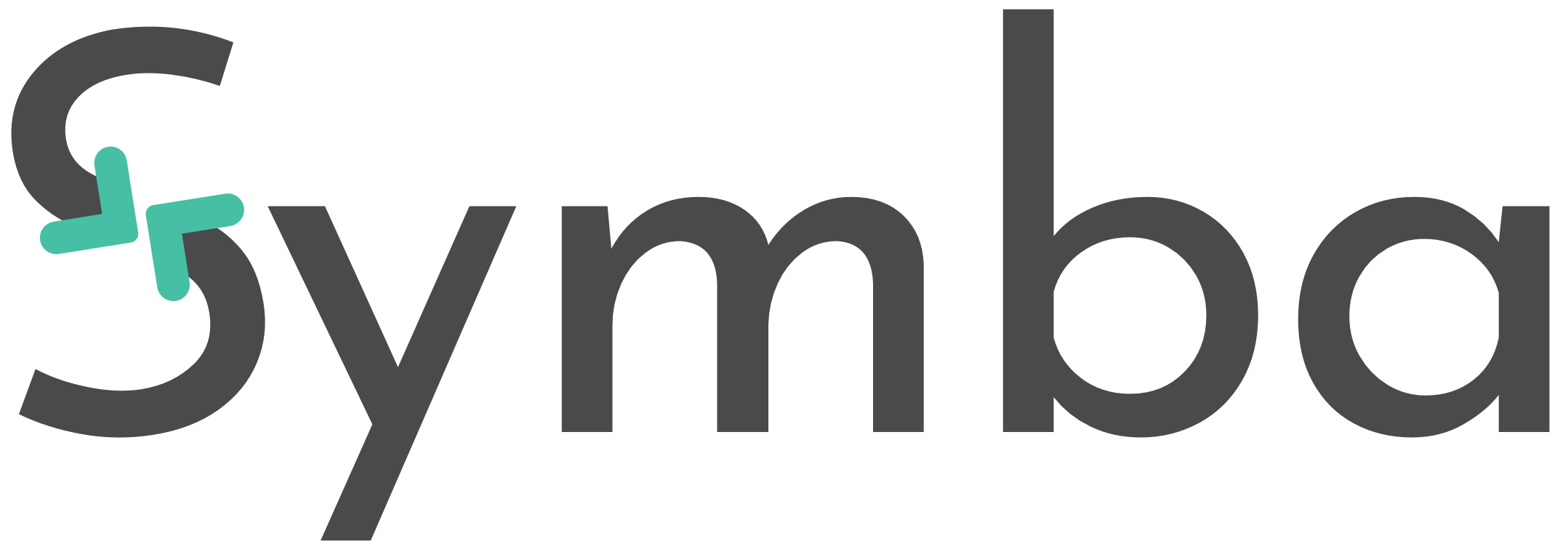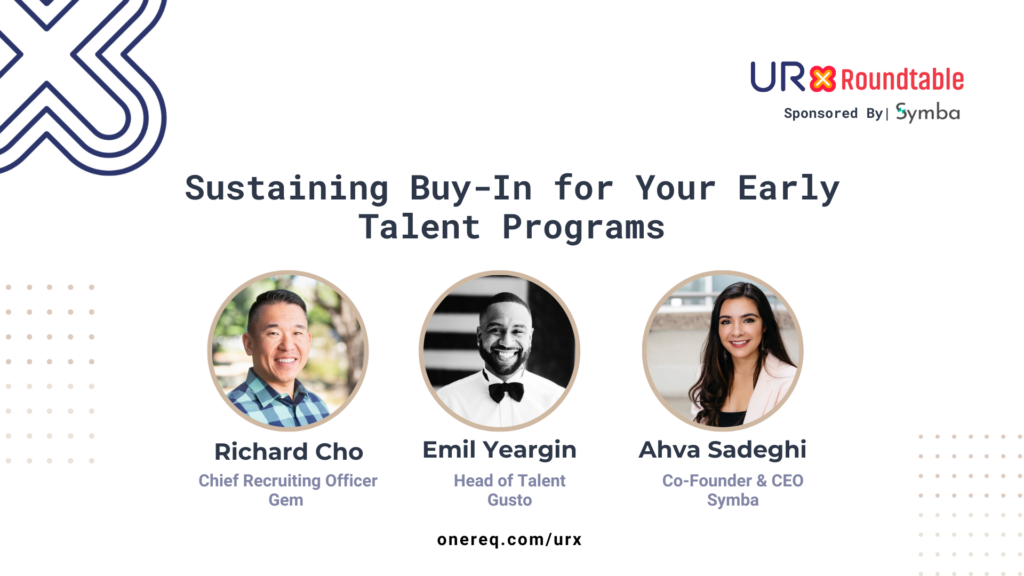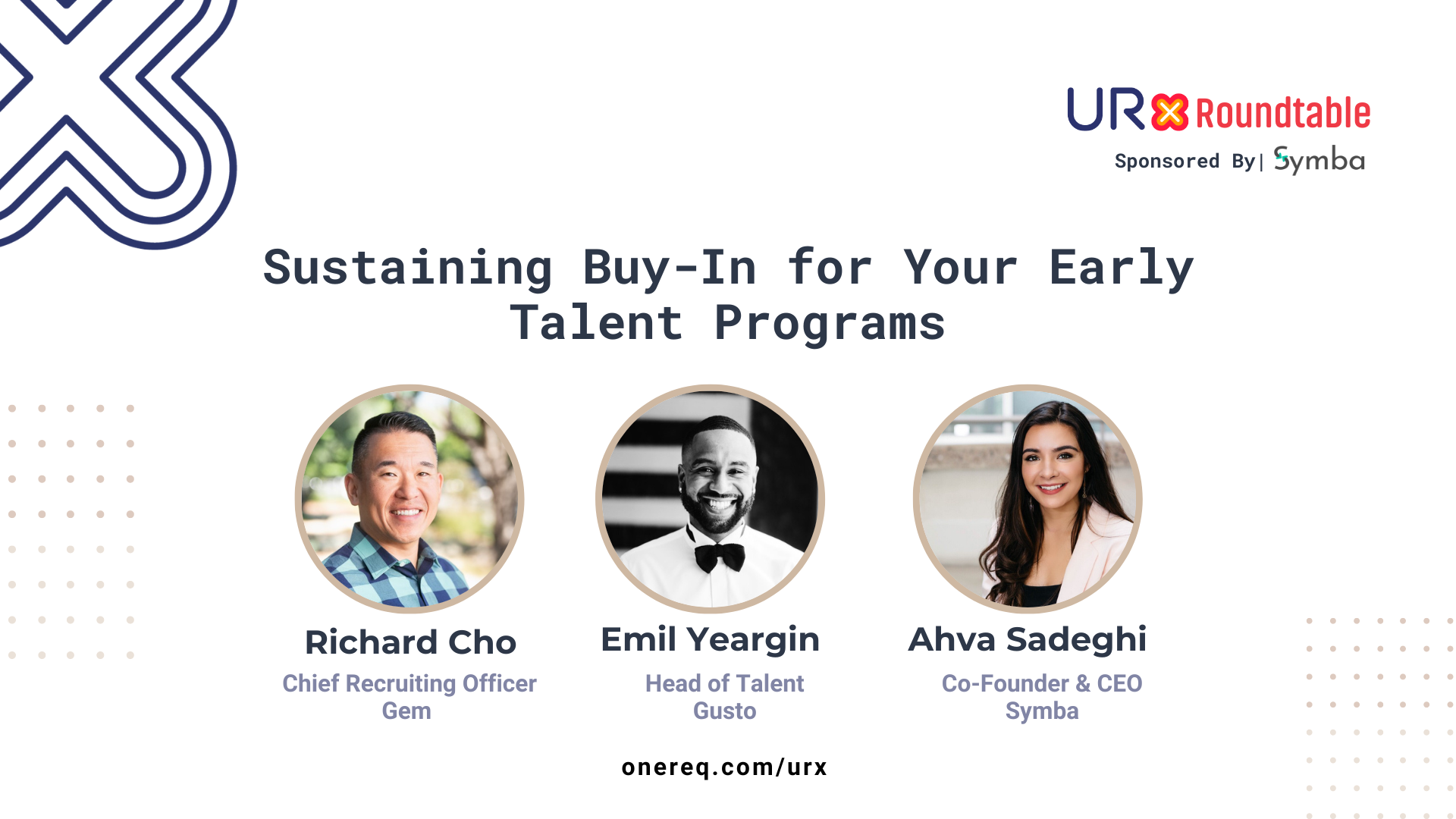Our Q3 2021 University Recruiter Roundtable kicked off with a panel moderated by Symba CEO and Co-Founder Ahva Sadeghi and featuring Rachel Heagle-Larson, Early in Career Program Manager at Nordstrom, Seema Yedavalli, University Relations Manager at Mattel, and Haley Rosano, Strategy Operations – Early Career TA at ViacomCBS. Check out the key takeaways from the panels and breakout discussions on how teams track and measure program success.
Here were some of the key takeaways:
- Collect constant feedback from all program participants throughout your program.
Paying close attention to survey feedback and NPS scores at various points throughout your program, even after the first week, can be critical in turning a no-hire into a hire. This is especially true in a remote setting. It enables you to be proactive and address any issues as they arise. For example, Seema described a time when an undergraduate intern in Mattel’s program didn’t have the Excel skills that their manager was looking for; because they got this feedback early on, Mattel was able to support the intern by enrolling them in a course to get their skills up to speed.
Many of you are probably already surveying your interns and intern managers; Rachel also recommends collecting feedback from mentors. At Nordstrom, mentors spend a lot of time with their interns, sometimes even more than a manager might. They have unique insight into how an intern is performing and navigating through the program.
- Different goals become relevant at different times throughout an internship program.
During the breakout sessions, Symba gave URx community members three overarching goals to rank and sort by priority: exceptional experience (were all program participants satisfied with the internship program?), high conversions (to full-time, return intern, contract, or however you measure this stat), and diversity & inclusion. Many said that all three goals were a priority and that they went hand-in-hand with each other.
It was also pointed out that with program goals, there’s oftentimes no clear overall ranking because throughout a program, each goal might be prioritized differently. For example, you might measure diversity while recruiting and at the beginning of a program, but you aren’t going to be measuring if your program converts them, so diversity takes precedence. During the program, experience and inclusion are probably going to be prioritized over other goals, and at the end of your program, you’ll be more interested in conversion rates.
- Last but not least, as we were talking to each other, we discovered that regardless of program size, many internship programs experience the same challenges.
We’re all working towards very similar goals, we care about our interns, and we want to ensure that everyone walks away with value gained.
As Team Symba likes to put it, we are creating mutually symbiotic experiences.
Some other tips and insights:
- If your internship program is spread across different departments, it’s important to collect consistent metrics across these departments so you can clearly measure success and create a unified internship program across your company.
- Different industries might track different metrics to measure the success of their internship programs. Haley from ViacomCBS mentioned that the entertainment industry has many project-based employees so when they measure the conversion rates for their internship program, they look at both the conversion rate to project-based employees as well as conversion rate to full-time staff.
- Building a diverse intern pipeline should include working with HBCUs, community colleges, and nontraditional educational pathways. When recruiting from HBCUs, make sure you’re building a real relationship where you’re truly investing in the students and it’s not just a one-off, transactional relationship. In addition, look into alternative avenues for recruiting interns outside of universities. Bootcamps and other training programs can be great places to find potential interns.
The Symba Team is also putting together a workbook on Key Metrics to Optimize and Scale Your Internship Program with sample surveys and spreadsheets you can use to collect and track the metrics. Stay tuned!









